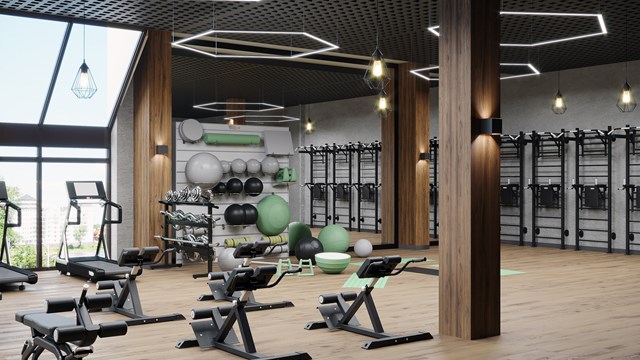In these difficult inflationary times, many co-op corporations and condominium associations are looking for ways to generate income to make up for unexpected financial shortfalls between their projected operating expenses and current actual expenses. Some boards have even resorted to increasing (sometimes more than once) maintenance or common charges to keep themselves in balance.
One option some communities are exploring is opening their amenities – pools, tennis courts, gyms, and community rooms and so forth - to non-residents for a fee. While this idea may look attractive and result in enough income to solve some acute cash flow problems, is it a viable long-term alternative? Or could it be a potential source of trouble?
Management’s View
Adam Densky, a managing director with AKAM management, a national management firm with offices in New York and other locations around the country says, “One of the main draws of living in a condo or co-op with amenities is the sense of privacy and exclusivity offered. That being said, every community is unique, and the decision to use the assets of the community to generate income is ultimately up to the board and the owners. As managers, we would encourage boards to thoroughly weigh the pros and cons of this type of arrangement and guide them through the process to ensure whatever decision they make is the most beneficial one for their property in the long term.”
With that said, Densky cautions, “There are many details a board must carefully consider before opening their private residential amenities up to the public, with value and privacy being at the top of the list. From a selling perspective, a property can potentially lose some of its allure, and affect monthly common charges. While there is opportunity to generate income based on offering the amenity [to outsiders], it wouldn’t necessarily guarantee drastic decreases in costs for owners, or prove to be worthwhile for a property over time. Publicizing common areas will require additional staffing and security, increased maintenance and upkeep, technology add-ons to support scheduling and payment options, among other various resources to ensure things always run smoothly.”
“Additionally,” adds Densky, “Another disadvantage is losing out on the biggest benefit that condos and co-ops offer residents - the convenience and sense of community. With increased traffic and demand from the public, residents may not have the same opportunities to enjoy the common spaces at their leisure and comfort, or foster connections with each other.”
Legal Considerations
Chris Florio, a partner with Stark and Stark, a law firm located in Lawrenceville, New Jersey, observes that “Most times, when non-members may use a community association’s amenities, the policy typically originates at inception of the association due to a number of factors, not the least of which are the municipality approvals needed for the project. When done after a community association is built out, I will always stress the need for a member vote [to approve the plan]. Members in a community have a rightful expectation that the amenities will be for those members only. Further, more use means added stress to the asset, potentially leading to a shorter lifespan for that asset, which will then necessitate greater reserves in a shorter time period. Operating and deferred maintenance costs will also increase - so these all need to be addressed on the planning stage.”
According to Mark Hakim, an attorney with New York-based law firm Schwartz Sladkis Reich Greenberg & Atlas, “Unless there is a specific reservation or prohibition in the governing documents of the building, amenities in a building may, on a case-by-case basis, be opened to non-residents. That said, although generally not binding on the board, I would still look to the offering plan to see what the intentions for the proposed/advertised use of the space originally were.’
“Furthermore,” he continues, “without relying on what the board is permitted to do, I would always counsel my clients to discuss this and take a poll of the shareholders and unit owners. Their opinion here is quite important, as this is often a hot button item. Many residents do not want non-residents using these facilities, generally for privacy, noise, security and other similar reasons.”
William McCracken, a partner with the law firm Ganfer Shore Leeds & Zauderer, also located in New York City, sums it up succinctly: “I think this idea ends up on the cutting room floor,” he says. “The legal issues come from all angles -- authority under the governing documents, insurance requirements, zoning and licensing restrictions, and additional security obligations, just to name a few. But even if you found a way around the legal problems, a proposal like this fundamentally changes the character of a core amenity. For that reason alone, I would expect a lot of blowback from the shareholders or unit owners.”










Leave a Comment